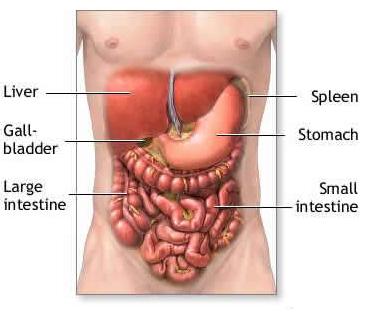
The gallbladder is a small, pear shaped organ, situated just underneath and behind the liver. it aids in food digestion and stores bile. The liver makes bile, which, when secreted from the gallbladder helps break down fat from foods you eat. The most common cause of gallbladder problems is gallstones.
Bile is important because it breaks down fat so that your body can use it. without bile, your body would not be able to absorb necessary nutrients like fat-soluble vitamins, such as vitamins A, D, E, and K. Additionally, essential fatty acids would pass right through your digestive tract, without being absorbed. This causes dry skin, calcium deficiency, and scalp problems.
Bile is also an antioxidant. it helps remove pollutants from your liver. The liver acts as a huge filter in your body. it removes foreign substances that are harmful, such as drugs, alcohol, prescription medication, bacteria, and viruses. The liver sends these foreign substances along their way via bile, into the gallbladder, and eventually out of your body through the large intestine in the form of feces.
Symptoms of Gallstones
Gallstones form when bile does not empty from the gallbladder. This stagnate bile then becomes thick and sludge like, eventually forming into small crystals or stones. These stones then block the bile duct, which causes more bile build up within the gallbladder and ultimately more gallstones.
Common signs and symptoms of gallstones include the following:
* Pain in the right abdomen
* Pain under the right shoulder
* Clay colored stools
* Nausea and/or vomiting
* Jaundice (yellowing) of the skin or eyes
Although there are many causes of gallstones, including heredity, gender, and family history, certain lifestyle factors and pre-existing conditions may put you at an increased risk for gallbladder problems.
Risk factors include the following:
* Daily diet: regularly eating a diet high in fat and cholesterol and low in dietary fiber increases your risk for gallstones
Age: people over 60 typically secrete more bile than younger folks
* Diabetes: people with diabetes usually have high triglycerides, which increases the risk of gallstones
* Gender: women are twice as likely as men to develop gallstones due to estrogen production
Treatment for gallstones includes the removal of the gallbladder and/or prescription medication. Your gallbladder is not necessary for you to live; therefore, doctors may remove it with no adverse side effects. Prescription medication may help dissolve gallstones; however, since they generally recur after being dissolved, total gallbladder removal is usually the best treatment.
The definitive guide to Gallbladder Problems disease. Find out Different Gallbladder Problems.
Chelation